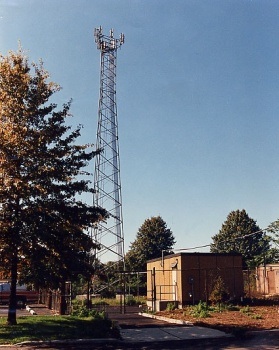
BRYCE, Utah — Bryce Canyon National Park is considering the issuance of separate right-of-way permits to Verizon Wireless, South Central Utah Telephone Association and Garkane Energy Cooperative for the installation of a cellular telecommunications tower, fiber optic utility and electric utility rights-of-way, respectively.

The National Park Service has prepared an environmental assessment to evaluate the impacts and explore mitigation measures applicable to building a single cell tower in the Bryce Amphitheater area of the park. According to the assessment, Verizon Wireless submitted an application in July 2015 to install a cellular telecommunications tower near the water tanks and existing park service radio towers in the area known as “Science Hill.”
According to Verizon Wireless, the facility would provide improved cellular service to park visitors and staff, particularly in the developed areas of the park where the greatest density of visitors and staff are typically present. The proposed tower would require fiber optic data and electrical power connections.
The park service held several meetings with Verizon Wireless and conducted outreach with the public, Garfield County, partners and affiliated tribes to identify potential alternative site locations that would minimize impacts to the park, the environmental assessment states. This also included sites that are relatively secluded, inaccessible to or rarely visited by the public and are close to existing infrastructure in disturbed areas with nearby power sources.
Existing Verizon Wireless towers or antennas in the vicinity include sites near Ruby’s Inn (known as Henderson Point), on Wilson Peak and in the town of Tropic. The assessment states that these sites provide limited cellular service within the park. The Wilson Peak and Henderson Point sites provide coverage primarily above the canyon rim on the plateau, while the Tropic site provides coverage primarily below the rim within the amphitheater.
The park service is required to consider this wireless telecommunication application from Verizon in accordance with the Telecommunications Act of 1996, which authorizes, but does not mandate, a presumption that such requests be granted.
Given the requirements of the Telecommunications Act and related park service management policies, the environmental assessment states that the park service needs to undertake the following in determining whether to grant the right-of-way permits:
- Understand, characterize and analyze the environmental impacts of a proposed cellular tower and the availability of practicable alternatives to fully inform a decision as to whether to grant right-of-way permits.
- Give consideration consistent with National Park Service management policies as to whether the proposal would cause unavoidable conflict with the park’s mission or is inconsistent with the purposes and values for which the park was established, in which case the permits would be denied.
- Evaluate the potential positive and negative effects on the park’s natural and cultural resources and the visitors’ experience and safety.
- Give consideration to existing nearby cellular telecommunication facilities and existing and future park cellular needs, including co-location.
As part of the environmental assessment, two options were evaluated in addition to a “no-action alternative”: two tower designs (mono pine and self-support lattice), three heights (40, 60 and 80 feet), and two locations (Science Hill and Manzanita Dorm). The recommended alternative is the 60-foot lattice design at Science Hill near Inspiration Point.

Impact topics retained for further analysis include historic properties and cultural landscapes, vegetation, visitor use and experience, visual and scenic resources, and recommended wilderness.
Impact topics dismissed from further analysis include air quality, archaeological resources, environmental justice, ethnographic resources and Indian sacred sites, human health and safety, migratory birds, night sky, soundscape, and special status species. For more information on why these topics were dismissed, read the environmental assessment here.
This environmental assessment is available for a 30-day public review period that will run through Nov. 25, 2019.
Comments can be submitted online or mailed to: Superintendent Bryce Canyon National Park, P.O. Box 640201, Bryce, Utah 84764.
Before including your address, telephone number, electronic mail address or other personally identifying information in your comments, be aware that your entire comment (including your personally identifying information) may be made publicly available at any time.
While you may ask us to withhold your personally identifiable information from public review, the park service cannot guarantee that they will be able to do so. For more information please contact the park superintendent at 435-834-4700.
Copyright St. George News, SaintGeorgeUtah.com LLC, 2019, all rights reserved.